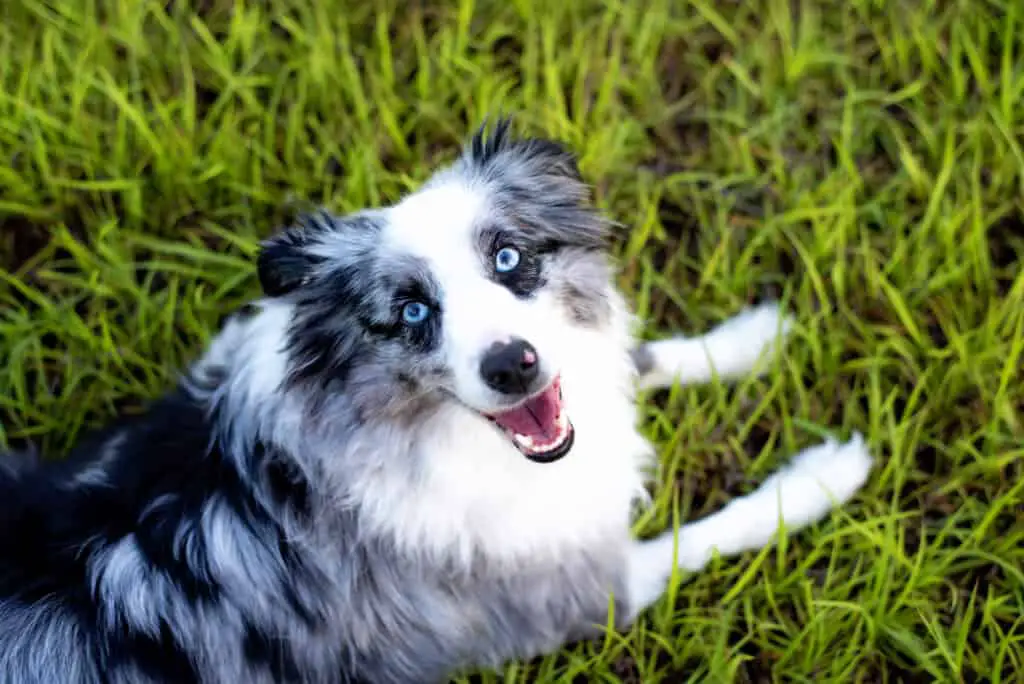Our website is supported by our users. We sometimes earn money when you click an affiliate link and make a purchase. This is at no extra cost to you and helps us to create quality content. Thank you for your support. For all that have shown us such wonderful support, we thank you from the bottom of our hearts!
The Mini Australian Shepherd, affectionately known as the Mini Aussie, is a small-sized herding dog that embodies the same characteristics as the standard size Australian Shepherd counterpart.
Despite them being small dogs, this breed maintains the herding instincts and is known for its remarkable intelligence and trainability.
They are highly sought after for their versatility, from serving as diligent working dogs on smaller ranches to being an energetic and affectionate family companion.

Originated in the United States, the Mini Australian Shepherd was bred for those desiring a compact dog with strong herding abilities.
Standing up to 18 inches tall and weighing up to 40lbs as an adult, the Mini Aussie is a mirror image of the Australian Shepherd, only condensed.
Their agility and intelligence make them excellent participants in dog sports, and with their warm and protective nature, they also make great household pets.
Key Takeaways
- Miniature Aussies are intelligent, trainable, and excel in agility and herding tasks.
- Though they are small Australian Shepherds, they maintain the herding instincts and energy of the standard Australian Shepherd.
- Known for their loyalty, Mini Aussies make both excellent working dogs and affectionate companions.
History of the Mini Australian Shepherd

The Mini Australian Shepherd, known affectionately as the “Mini Aussie,” is just a smaller version of the standard Australian Shepherd. E
xperts believe your Mini Aussie’s ancestors arrived in the United States via Australia in the 19th century, with the breed itself first developing in California in the 1960s.
Originally bred for herding livestock, the Mini Aussie retains the herding instinct of its larger counterparts.
Boasting intelligence and agility, these dogs quickly adapted to the varied demands of North American herding activities.
Your Mini Australian Shepherd’s historic lineage might trace back to dogs that arrived with Basque shepherds from Europe to North America.
Recognized for their hardworking nature, these early dogs were crucial in the development of today’s breed.
They primarily worked with sheep and other livestock, showcasing their skills across various terrains of the Western United States, and particularly in California.
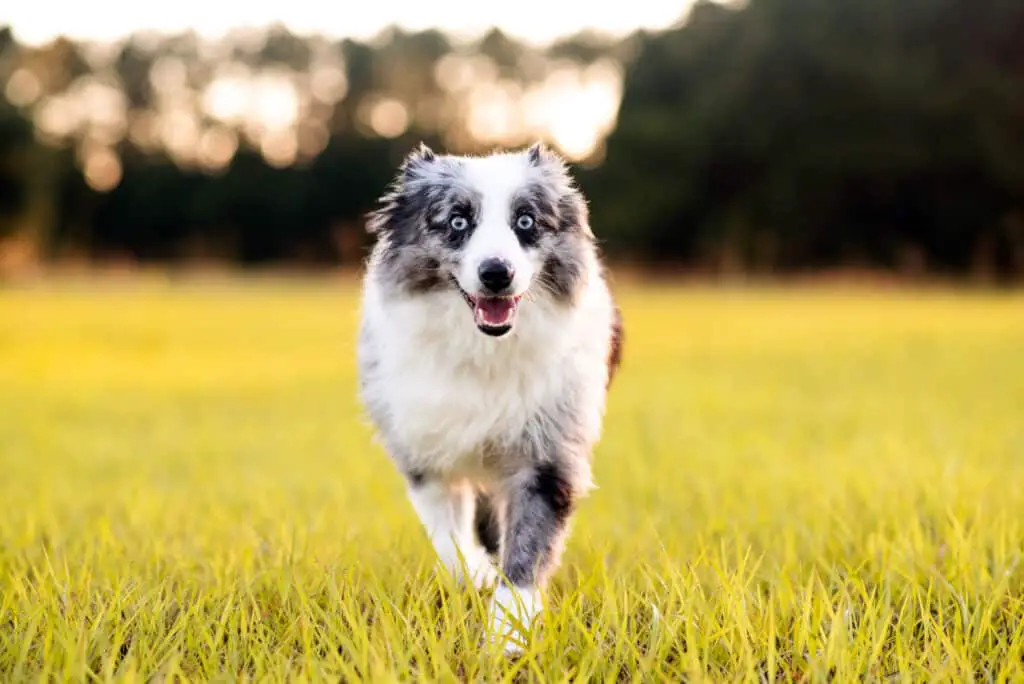
In the domain of breed registries, the National Stock Dog Registry initially acknowledged the Mini Aussie’s role in American herding culture.
As time passed, the American Kennel Club (AKC) recognized a version of the breed as the Miniature American Shepherd.
The Mini Aussie and the Miniature American Shepherd are similar, yet they are officially distinct entities within dog breed classifications.
Interestingly, your Mini Aussie is not registered with the AKC under that name.
Instead, it’s recorded with the AKC Foundation Stock Service as the Miniature American Shepherd.
This classification allows it to continue its journey towards full recognition, ensuring the breed’s characteristics and standards are preserved for future generations.
Despite the term “Australian,” the breed, as you recognize it today, is a true product of the United States, reflective of its rich herding legacy.
Physical Characteristics of the Mini Australian Shepherd

The Mini Australian Shepherd is a small-sized dog breed with distinct coat patterns and colorations, as well as captivating eye colors.
They exhibit a sturdy, athletic build within a compact frame, with males and females differing slightly in size.
Height Male
Males typically stand between 14 to 18 inches tall.
Height Female
Females are usually a bit shorter, measuring around 13 to 17 inches in height.
Weight Male
A healthy male Mini Australian Shepherd ranges from 20 to 40 pounds.
Weight Female
Females often weigh slightly less, with a healthy range being 20 to 30 pounds.
Eye Colors
Your Mini Aussie may have eyes that are blue, brown, or may even possess heterochromia—having two different colored eyes.
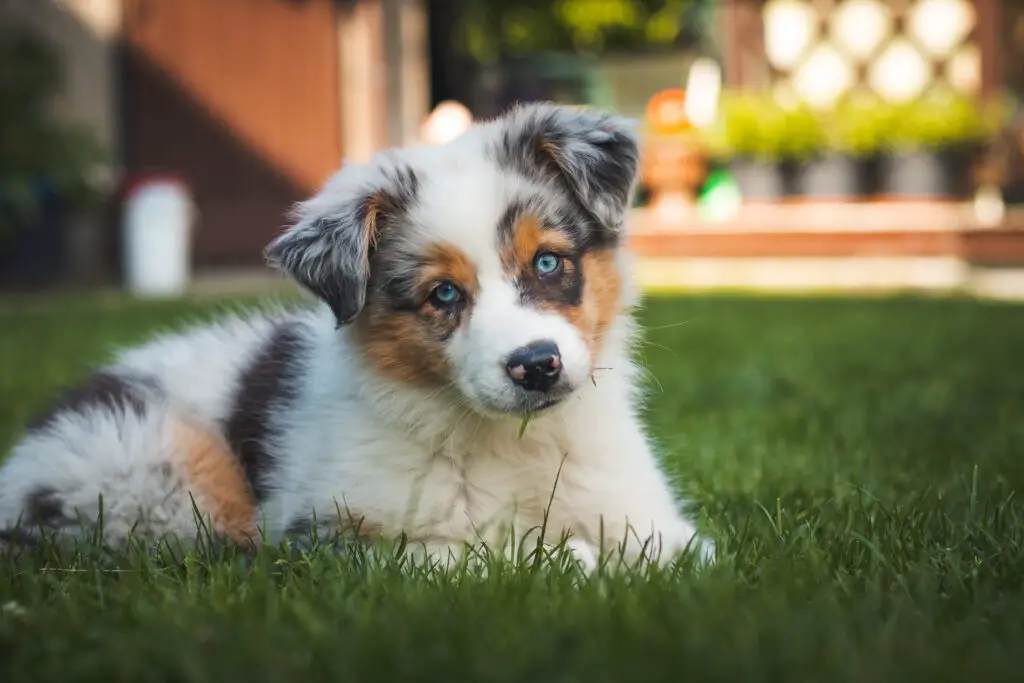
Coat Colors
The coat colors vary widely and include blue merle, red merle, black, red, white, and tan.
Coat Types
They possess a double coat, with the outer being slightly wavy and weather resistant, and the undercoat being soft and providing insulation.
Life Expectancy
Mini Australian Shepherds have a life span typically ranging from 12 to 15 years.
Overview of the Physical Characteristics of the Mini Australian Shepherd
Your Mini Australian Shepherd is strong and muscular, with a body that’s slightly longer than tall.
Their coat is made for utility, helping them adapt to various climates, and while it does shed, regular grooming can manage it.
Despite their small size, they are hearty and robust, giving them the same work ethic as their larger Australian Shepherd counterparts.
Temperament and Training of the Mini Australian Shepherd
Mini Australian Shepherds are affectionate and loyal companions, known for their playful and energetic personality.
As a herding breed, they possess a natural protectiveness that makes them vigilant guardians of their family.
And just like the standard Aussie, they have a strong work ethic.
Temperament:
- Energetic: They display energy levels that requires daily physical exercise to maintain their mental and physical health.
- Intelligent: They are an intelligent dog and that makes them highly trainable, but they need consistent, creative training techniques.
- Affectionate: They are friendly dogs known to be easygoing with their families, showing lots of love and affection.
- Playful: This breed loves to engage in play, perfect for families looking for a lively pet.
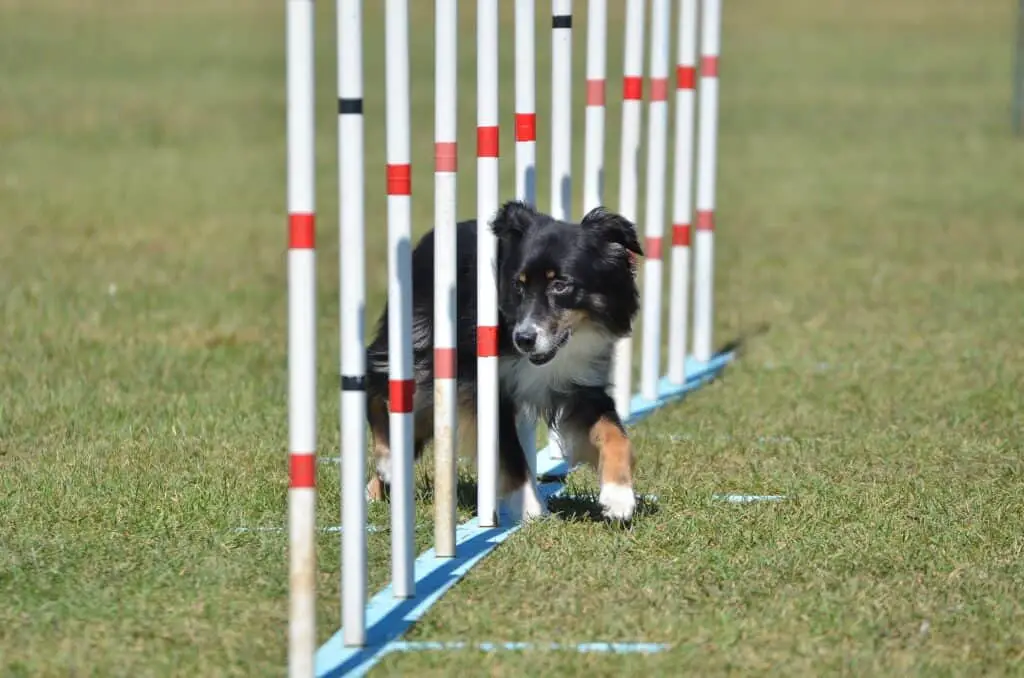
Training:
- Trainability: Their smart nature means they pick up on commands quickly. Early socialization and training from a young age are essential to harness their intelligence.
- Stimulation: They need both physical and mental stimulation; include activities that keep them thinking, like agility courses or new tricks.
- Consistency: It’s important for you to be consistent with commands and expectations to avoid causing confusion.
- Positive Reinforcement: They respond well to positive reinforcement techniques; rewarding good behavior is more effective than punishment.
To sum up, your Mini Australian Shepherd thrives when given a combination of affection, structure, and stimulating activities to channel their herding instincts productively.
With the right training and environment, your Mini Australian Shepherd will be a joyful and devoted member of your family.
Health Issues of the Mini Australian Shepherd
Generally, Mini Australian Shepherds are healthy dogs but are predisposed to a range of health conditions.
Hip Dysplasia
Hip dysplasia is a concern that can affect Miniature Australian Shepherds, a breed known for its intelligence and agility.
This hereditary condition involves an abnormal development of the hip joint, leading to instability and potential joint problems.
While the Miniature Australian Shepherd is generally a smaller breed, it is not immune to hip dysplasia.
Symptoms may include lameness, reluctance to engage in physical activities, and difficulty rising.
Though there is no cure for hip dysplasia, management strategies such as weight control, regular exercise, and joint supplements can help improve the dog’s quality of life.
Responsible breeding practices, including screening breeding dogs for hip dysplasia, play a role in reducing the prevalence of this condition in the Miniature Australian Shepherd population.
Regular veterinary check-ups and early detection contribute to effective management and overall well-being for Mini Australian Shepherds with hip dysplasia.
Progressive retinal atrophy (PRA)
Progressive Retinal Atrophy (PRA) is a hereditary eye disorder that can affect Miniature Australian Shepherds, gradually leading to vision loss.
This condition involves the degeneration of the retina over time. Early signs often include night blindness, and as the disease progresses, affected dogs may experience complete blindness.
Since PRA is genetic, responsible breeding practices, including genetic testing, are crucial in reducing the incidence of this condition within the Miniature Australian Shepherd population.
While there is currently no cure for PRA, regular veterinary eye examinations can aid in early detection, allowing for proactive management strategies and adjustments to maintain the affected dog’s overall well-being.
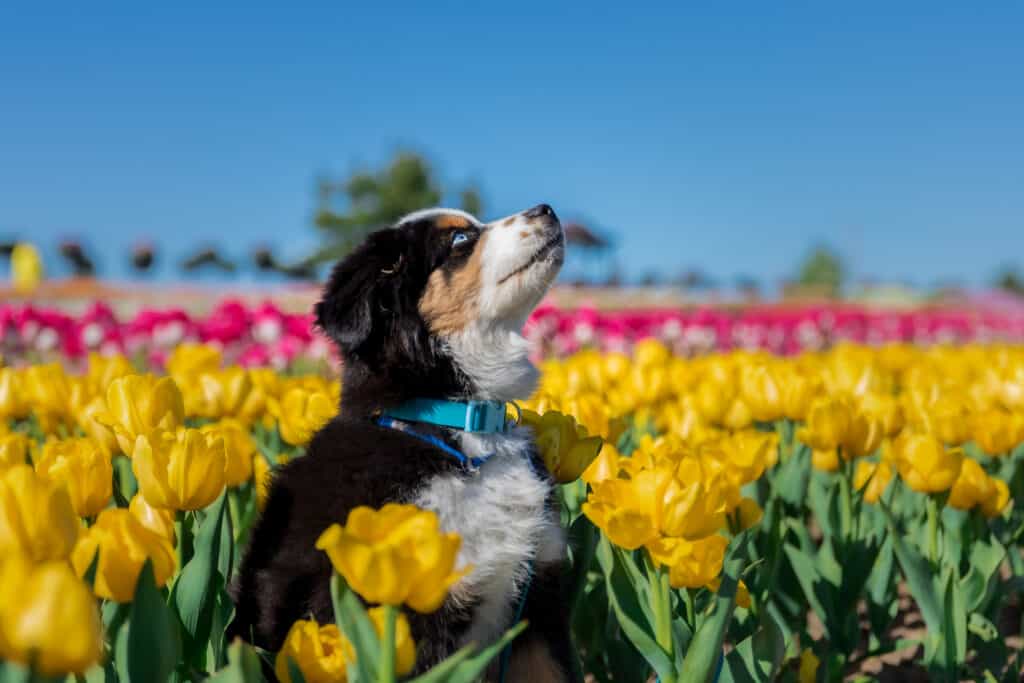
Deafness
Deafness can be a concern in Miniature Australian Shepherds, and it may be congenital or acquired later in life.
Genetic factors can contribute to hereditary deafness in this breed.
Signs of deafness include a lack of response to auditory stimuli, failure to react to familiar sounds, or difficulty following commands.
Responsible breeding practices, including screening for congenital deafness, play a crucial role in minimizing the occurrence of this condition.
While there is no cure for congenital deafness, training methods involving visual or tactile cues can help facilitate communication with a deaf Miniature Australian Shepherd.
Regular veterinary check-ups and early identification of deafness can aid in implementing appropriate strategies to ensure the well-being and quality of life for these dogs.
Cataracts
Cataracts, a clouding of the eye’s lens that impairs vision, can affect Miniature Australian Shepherds.
While cataracts can develop due to various factors, including genetics, age, or underlying health conditions, they are of particular concern in hereditary cases.
Mini Australian Shepherds may be predisposed to genetic cataracts, which can manifest as a gradual clouding of the lens, affecting the dog’s eyesight.
Regular veterinary eye examinations are essential for early detection, allowing for timely intervention and management.
Inherited cataracts can impact the breed, emphasizing the importance of responsible breeding practices and genetic screening to reduce the prevalence of this condition.
Treatment options may include surgical removal of cataracts to improve vision and maintain the overall ocular health of Miniature Australian Shepherds affected by this eye disorder.
Allergies
Miniature Australian Shepherds can be prone to allergies, which may manifest as skin irritations, itching, ear infections, or gastrointestinal issues.
Allergies in this breed can result from various factors, including food sensitivities, environmental allergens, or genetic predispositions. Identifying the specific allergen is crucial for effective management.
Common allergens may include certain ingredients in dog food, pollen, dust mites, or insect bites.
Working closely with a veterinarian is essential to determine the root cause and develop an appropriate treatment plan, which may involve dietary changes, allergy medications, or environmental modifications.
Regular grooming and maintaining a clean living environment can also help alleviate allergy symptoms in Miniature Australian Shepherds, ensuring their comfort and well-being.
| Common Health Issues | Description | Potential Outcome |
|---|---|---|
| Hip Dysplasia | Improper fitting of the hip joint | Arthritis or mobility issues |
| Progressive Retinal Atrophy | Degeneration of retinal cells | Blindness |
| Deafness | Congenital or early-onset hearing loss | Complete or partial deafness |
| Cataracts | Opacity in the lens of the eye, can cause vision issues | Vision impairment or blindness |
Stay informed about these health problems to ensure your Mini Australian Shepherd stays as healthy as possible.
Proactive care can help manage or prevent these conditions, making for a happier and more comfortable life for your furry friend.
Grooming Your Mini Australian Shepherd
Proper grooming is essential for maintaining your Mini Australian Shepherd’s health and appearance.
From managing their double coat to ensuring dental hygiene, each step plays an important role in their overall well-being.
Brushing
Brushing your Mini Australian Shepherd is a cornerstone of coat maintenance.
You’ll want to brush your dog several times a week to manage shedding.
Use a slicker brush to detangle and remove loose hair, focusing on one section at a time. During seasonal shedding peaks, increase brushing to daily.
Bathing
Bathing your Mini Aussie should be done carefully.
Over-bathing can strip the coat of natural oils.
Aim for a bath every few months or when the coat is dirty. Utilize dog-friendly shampoo, and ensure a thorough rinse to avoid irritation.
This ELEGX massager is great for getting down through the fur to your dog’s skin with the shampoo and really giving a nice massage.
Cutting Fur or Hair
Cutting your Mini Australian Shepherd’s fur is not usually necessary given their self-maintaining double coat. If needed, a puppy cut can even out fur length and provides a consistent look that’s easy to manage.
Clipping or Grinding Nails
Keep your dog’s nails at a comfortable length to avoid impairing their ability to walk.
Clipping or grinding can be done at home with the right tools.
If you cut their quick, be sure to dip their nails in Styptic Powder to stop the bleeding.
If you are nervous to trim your dog’s nails, check out our article on How to Grind Your Dog’s Nails or How to Clip Your Dog’s Nails Safely.
Clipping should be done every 3-4 weeks, depending on how quickly your dog’s nails grow.
Dental Care
Dental care is vital to remove plaque and reduce the risk of bacteria build-up.
Brushing your Aussie’s teeth two to three times a week with dog-specific toothpaste and toothbrush helps maintain oral health.
Cleaning Ears
Check and clean your Mini Aussie’s ears regularly to prevent infections.
Gently wipe the outer ear with a vet-approved cleanser and a cotton ball, but do not insert anything into the ear canal.
Remember, gentle care and regular grooming will help your Mini Australian Shepherd look and feel their best.
Owning a Mini Australian Shepherd
Owning a Mini Australian Shepherd, often affectionately referred to as a Mini Aussie, entails understanding both the initial and ongoing costs associated with this energetic and affectionate breed.
Your responsibilities include financial commitments, providing suitable living conditions, and ensuring proper training and healthcare.
Cost of Purchase
Purchasing a Mini Aussie from a reputable breeder typically ranges between $600 to $1800.
Prices vary based on pedigree, location, and the breeder’s reputability.
- Pedigree Mini Aussies: $1500-$1800
- Standard Mini Aussies: $600-$1200
High demand for the breed can also affect these costs.
Maintenance Costs
Annual maintenance costs for a Mini Aussie encompass food, grooming, training, and medical expenses.
- Food: Expect to spend about $250 to $700 annually.
- Grooming: These dogs require regular grooming due to their double coats. Budget approximately $30 to $500 yearly.
- Training: Special training costs can vary, with basic obedience classes around $50 to $125 per session.
- Medical Costs: Standard vaccinations, flea prevention, and checkups can total $200 to $600 annually.
Keep in mind these are estimates and actual costs may vary based on your circumstances.
Adopting a Mini Australian Shepherd
Adopting a Mini Aussie from a shelter or rescue can be a more affordable option with adoption fees typically ranging from $50 to $350.
This fee often includes initial vaccinations and spaying/neutering. Adopting can be a rewarding way to provide a home to a dog in need.
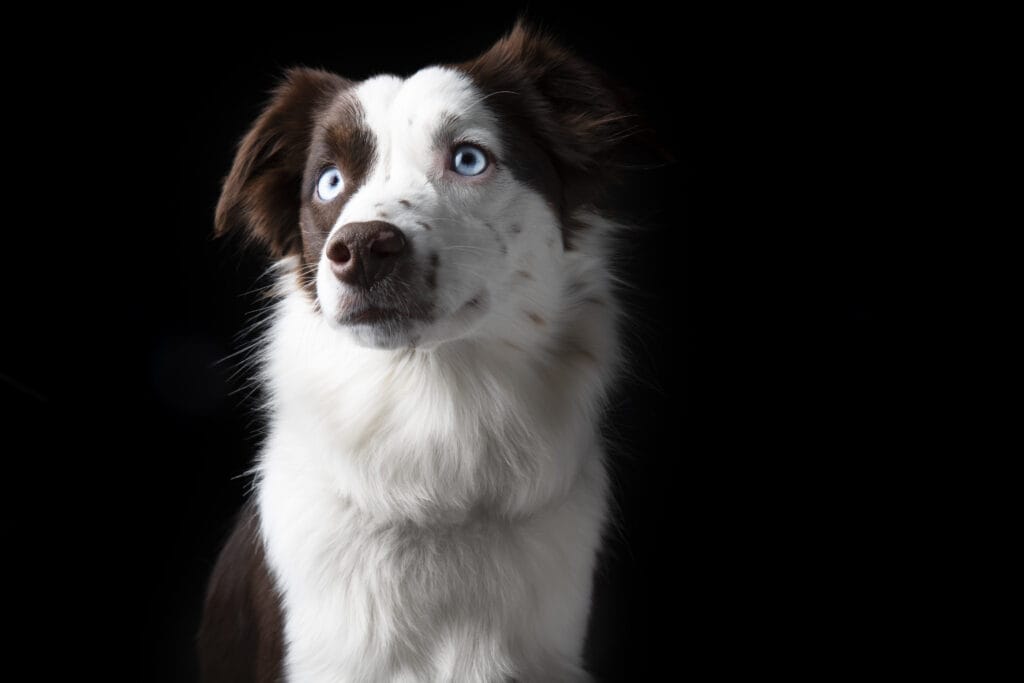
Finding Reputable Breeders
Finding a reputable breeder is crucial to ensure you’re getting a healthy, ethically-bred Mini Aussie puppy.
Research breeders thoroughly and consider the following:
- Breeders should perform health testing on their dogs.
- They must be knowledgeable about the breed and happy to answer your questions.
- They should offer post-adopting support for any breed-specific advice.
Remember, responsible breeders prioritize the welfare of their dogs over profit.
Frequently Asked Questions
When considering a Mini Australian Shepherd, it’s essential to understand their health, grooming needs, behavioral characteristics, suitability for families, and expected size.
The information below covers these frequently asked questions.
What are the health considerations for owning a Mini Australian Shepherd?
Mini Australian Shepherds are generally healthy, but like all breeds, they can be susceptible to certain health issues.
Regular vet check-ups and staying informed about potential genetic conditions like hip dysplasia and epilepsy are crucial.
What should I know before adopting a Mini Australian Shepherd?
Before adopting a Mini Australian Shepherd, be aware that they are energetic, require ample exercise, and thrive on companionship.
Assess your ability to meet these needs to ensure a good fit with your lifestyle.
How much grooming is required for a Mini Australian Shepherd due to shedding?
Due to shedding, Mini Australian Shepherds need regular grooming.
Brushing one to two times a week helps manage their double coat and reduces shedding, which intensifies during their semi-annual shedding seasons.
Is the Miniature Australian Shepherd an ideal breed for families?
These dogs are loyal and can be great for families, offering affection and a playful nature.
However, monitoring around young children is wise due to the breed’s herding instincts.
What are the typical behaviors of Mini Australian Shepherds when working or training?
Mini Australian Shepherds exhibit focused and intelligent behaviors when working or training.
They are eager to learn and please, making them highly trainable for various tasks and dog sports.
How large can I expect a Mini Australian Shepherd to grow?
A typical Mini Australian Shepherd grows to a height of 14-18 inches for males and 13-17 inches for females, with a weight range of 20-40 pounds, depending on their diet and activity level.
The Bottom Line

Your interest in the Mini Australian Shepherd suggests you’re looking for a dog with a vibrant personality and high intelligence.
Praised for their fierce loyalty and affectionate nature, these dogs are ideal companions for families and individuals alike.
Their small size doesn’t diminish their eagerness to engage in play or their zest for life.
Maintenance of the Mini Aussie does require consistent care, considering their long and wavy coats.
Prepare to invest in regular grooming to maintain their double coats, which aid in waterproofing and agility.
When it comes to compatibility, your lifestyle should accommodate their need for mental stimulation and physical activity.
Their intelligence places them as the sixth most intelligent breed according to the AKC, making them highly trainable but also in need of interactive tasks to keep their sharp minds occupied.
In summary, if you ensure regular grooming and can provide ample mental and physical activities, the Mini Australian Shepherd can integrate seamlessly into your life, becoming a cherished member of your home.
Their adaptability and size make them suitable even for smaller living spaces as long as their needs are met.
Please read our Legal Disclaimer

